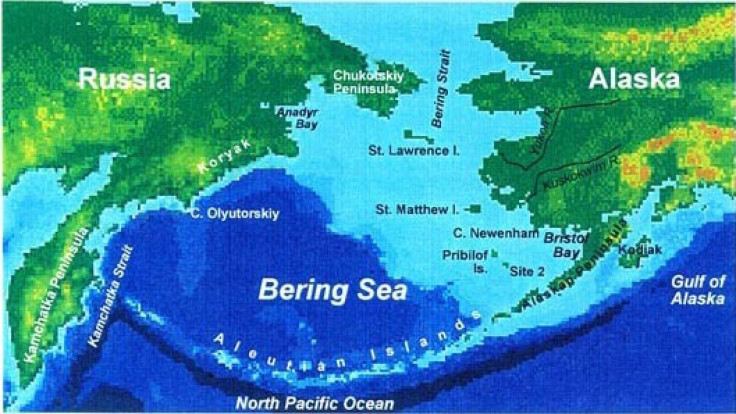Chinese, Russian Warships Seen Off Alaska On Joint Operation; Coastguard Raises Alarm
KEY POINTS
- Coast Guard reported that Chinese and Russian naval vessels were in a single formation as a combined surface action group
- Warships were operating in accordance with international rules and norms, but their presence raises suspicion
- Beijing and Moscow have pledged to intensify their practical cooperation in the Arctic
A U.S. Coast Guard vessel on a routine patrol mission in the Bering Sea off Alaska has reported encountering a Chinese guided missile cruiser, which was later discovered to be operating along with two other Chinese naval vessels and four Russian Navy ships.
The Chinese Renhai CG 101 guided missile cruiser was found approximately 75 nautical miles north of Alaska's Kiska Island by Coast Guard Cutter Kimball on Sept. 19, the U.S. Coast Guard said in a press release Monday.
The Kimball later spotted six additional vessels — two more Chinese naval vessels and four Russian Navy ships, including a destroyer — sailing together with the missile cruiser within the U.S. exclusive economic zone.
The Hawaii-based Kimball, a 127-meter (418-foot) vessel, which reported the encounter with the Chinese missile cruiser, said the Chinese and Russian ships were "all in a single formation with the Renhai as a combined surface action group operating in the U.S. Exclusive Economic Zone (EEZ)."
The Chinese and Russian ships later broke their action group formation, a tactical mission arrangement and dispersed, the release said.
The Coast Guard Cutter Kimball crew on a routine patrol in the Bering Sea encountered a People’s Republic of China Guided Missile Cruiser, Renhai CG 101, sailing approximately 75 nautical miles north of Kiska Island, Alaska, September 19, 2022. https://t.co/jInFcIblUq pic.twitter.com/Ax0pcte54h
— CoastGuardNews (@CoastGuardNews) September 27, 2022
Following the sighting, the Kimball crew is now operating under Operation Frontier Sentinel, designed to "meet presence with presence when strategic competitors operate in and around the U.S waters," the press statement added.
"While the formation has operated in accordance with international rules and norms, we will meet presence-with-presence to ensure there are no disruptions to US interests in the maritime environment around Alaska," Rear Admiral Nathan Moore, Seventeenth Coast Guard District commander, said in the statement.
A report in the South China Morning Post said that the 4,500-tonne Kimball cutter is much smaller than the 11,000-tonne Chinese destroyer Nanchang and also the 6,200-tonne Russian frigate Marshal Shaposhnikov – both of which were among the group spotted near Alaska.
According to the SCMP report, a Chinese guided missile frigate, the Yancheng, and Dongpinghu supply ship were also reportedly part of the joint operation, which was also said to include three Russian corvettes and a tanker.
Although the Coast Guard clarified that the formation was operating in accordance with international rules and norms, their presence in the region raises suspicion, given that China and Russia are looking to intensify their strategic partnerships in the Arctic.
In an effort to deepen their strategic partnership, Beijing and Moscow have pledged to intensify their practical cooperation in the Arctic.
NATO has said that Russia has set up a new Arctic Command and opened hundreds of new and former Soviet-era Arctic military sites, including deep-water ports and airfields. Meanwhile, China has declared itself a "near Arctic" state and has plans to build the world's largest icebreaker.
This latest joint operation by the navies of both countries, which comes soon after the joint naval drills at Russia's week-long Vostok 2022 war games that concluded on Sept. 7, is seen as part of their effort to strengthen the partnership between China and Russia.
However, this is only the latest encounter between the U.S. and Chinese naval ships in the region. According to reports, the first recorded encounter was in 2015. A similar encounter was reported in September 2021 when the U.S. Coast Guard cutters in the Bering Sea and North Pacific Ocean encountered Chinese ships, about 50 miles (80 km) off the Aleutian Islands.

© Copyright IBTimes 2024. All rights reserved.












